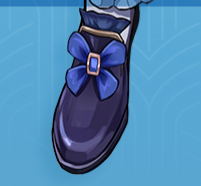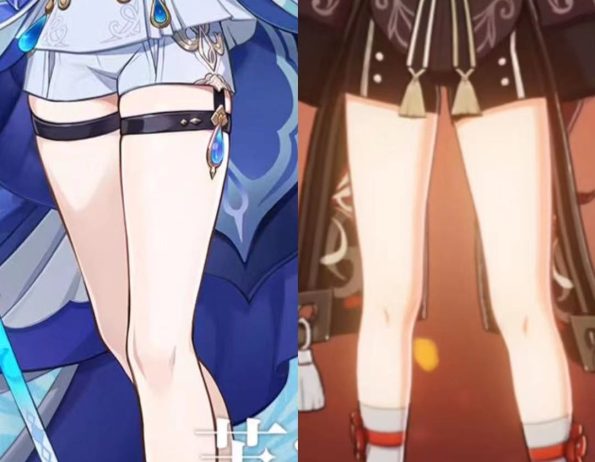1. Furina’s Cravat: Judicial Prestige & Historical Legacy
This style of neckwear originated in mid-17th century France. The lace-trimmed, multi-layered jabot collar became a symbol of status and prestige during that era.
Originally exclusive to male fashion, it transitioned into women’s formal wear in the 19th century and remains a staple in professional attire – notably worn by judges in Germany, lawyers in Australia, and other legal professionals worldwide.
In Furina’s design, this element symbolizes her dual role as:
- The Hydro Archon of Fontaine
- The nation’s supreme judicial authority
2. Furina’s Upper Attire: Royalty Deconstructed
The upper attire draws inspiration from two distinct sources:
- Germanic tribal clothing (Nordic influence)
- Traditional British royal court dress
This design serves as the quintessential prototype of modern men’s formal suits, composed of three key elements
A tailcoat (often left unbuttoned)
Notable features include:
✔ Wide cuffs with visible white lining
✔ A row of decorative front buttons (primarily aesthetic)
Color Symbolism
The black, white, and blue palette carries deeper meaning:
- Black & White: Represents duality (like the Joker/King in playing cards), mirrored in Furina’s heterochromatic eyes.
- Blue: Embodies her Hydro Archon divinity.
Note: The unbuttoned style and contrasting cuffs subtly reflect Furina’s “unconstrained” personality.
3. Furina’s Lower Attire: Regal vs Rebellious

Silhouette & Evolution
- Features a broad, straight-cut coat with a distinctive angled back hemline (from waist to lower back)
- This design evolved into the modern morning coat (early prototype of tailcoats)
Playful Contrasts
✔ Bare legs (similar to Hu Tao) → Highlights Furina’s lively, mischievous side
✔ Formal sword grip → Exudes regal solemnity
Symbolism & Irony
Every element screams nobility and royalty, emphasizing her high status—yet the black-and-white duality clashes humorously with her “chaotic gremlin” personality.
4. Furina’s Sash: Divine Self-Awarding


Design & Origin
- A decorative ribbon adorned with sapphire-encrusted bows
- Inspired by French honorific sashes traditionally used to display medals
Divine Irony
As an Archon, Furina would bestow honors (like granting Visions)—yet she wears this sash as if awarding herself.
This creates delightful contrast:
✔ Outward prestige (formal regalia)
✔ Inward playfulness (self-appointed “awards”)
Key Symbolism:
- Sapphires: Represent Fontaine’s waters (and perhaps unshed tears)
- Self-celebration: Pokes fun at her theatrical ego
5. Furina’s Shoes: Noble Ruffs as Ankle Decor

Unexpected Twist
- Black ankle boots paired with white ring-shaped ornaments
- Plot twist: These aren’t legwear—they’re relocated ruff collars (!!)
Historical Roots
- Originated as French “ruff collars” (16th–17th century)
- Worn by European nobility → Later adopted by circus clowns
Symbolic Contrast
✔ Regal heritage (royal status)
✔ Playful absurdity (clownish charm)
Furina’s “serious boots, silly ruffs” duality mirrors her:
- Divine authority (as Archon)
- Theatrical antics (as Fontaine’s “jester”)

Bonus Trivia:
The ruff’s stiff white folds mimic waves—a subtle hydro reference!
6. Furina’s Hat: The Ahoge of Chaos

A Delicate Contrast
- A petite formal hat with a blue gemstone bow
- Designed to juxtapose Furina’s “divine elegance” with her “playful immaturity”
The Ahoge Effect
✔ Defiantly upright → Symbolizes her stubborn, free-spirited nature
✔ Slightly crooked → Undercuts the hat’s sophistication
Hidden Meaning
While the hat itself reflects Fontaine’s high-society fashion, the mischievous ahoge screams:
“I may be your Archon, but I’m also this close to causing chaos.”
Design Easter Egg:
The bow’s gemstone hue matches her eyes—tying her “silly” and “sacred” sides together.








